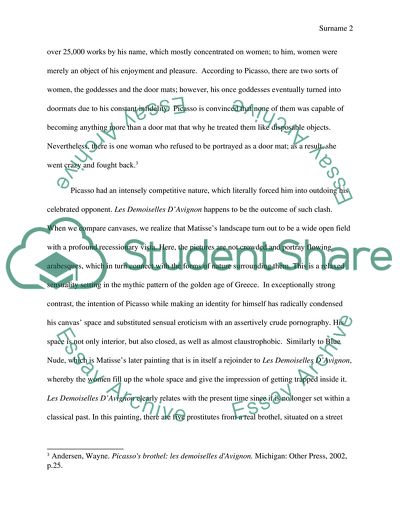Cite this document
(“Demoiselles D'Avignon by Pablo Picasso Essay Example | Topics and Well Written Essays - 1500 words”, n.d.)
Demoiselles D'Avignon by Pablo Picasso Essay Example | Topics and Well Written Essays - 1500 words. Retrieved from https://studentshare.org/visual-arts-film-studies/1462842-demoiselles-davignon-by-pablo-picasso
Demoiselles D'Avignon by Pablo Picasso Essay Example | Topics and Well Written Essays - 1500 words. Retrieved from https://studentshare.org/visual-arts-film-studies/1462842-demoiselles-davignon-by-pablo-picasso
(Demoiselles D'Avignon by Pablo Picasso Essay Example | Topics and Well Written Essays - 1500 Words)
Demoiselles D'Avignon by Pablo Picasso Essay Example | Topics and Well Written Essays - 1500 Words. https://studentshare.org/visual-arts-film-studies/1462842-demoiselles-davignon-by-pablo-picasso.
Demoiselles D'Avignon by Pablo Picasso Essay Example | Topics and Well Written Essays - 1500 Words. https://studentshare.org/visual-arts-film-studies/1462842-demoiselles-davignon-by-pablo-picasso.
“Demoiselles D'Avignon by Pablo Picasso Essay Example | Topics and Well Written Essays - 1500 Words”, n.d. https://studentshare.org/visual-arts-film-studies/1462842-demoiselles-davignon-by-pablo-picasso.


